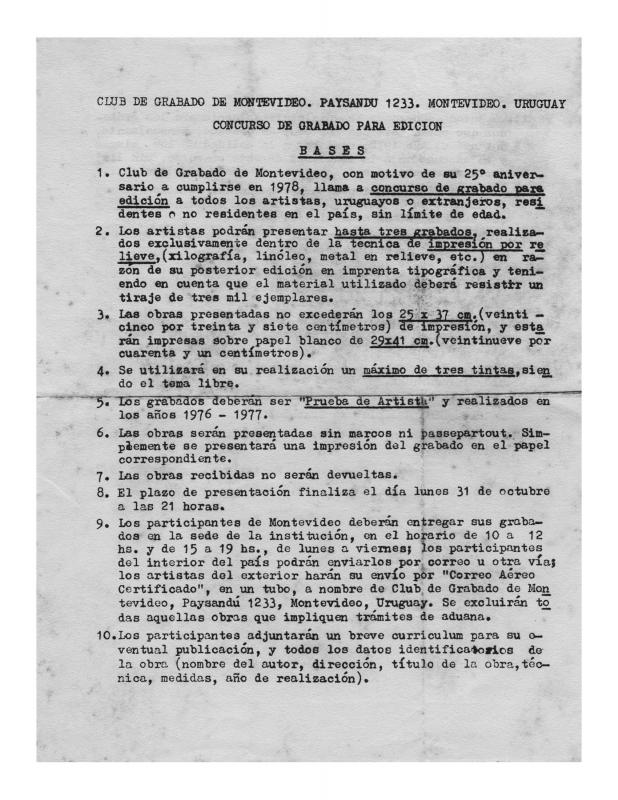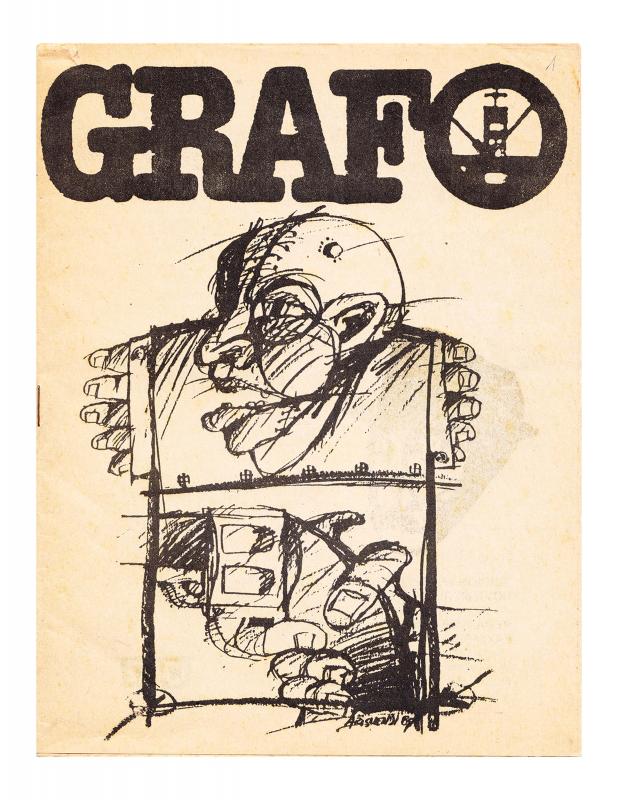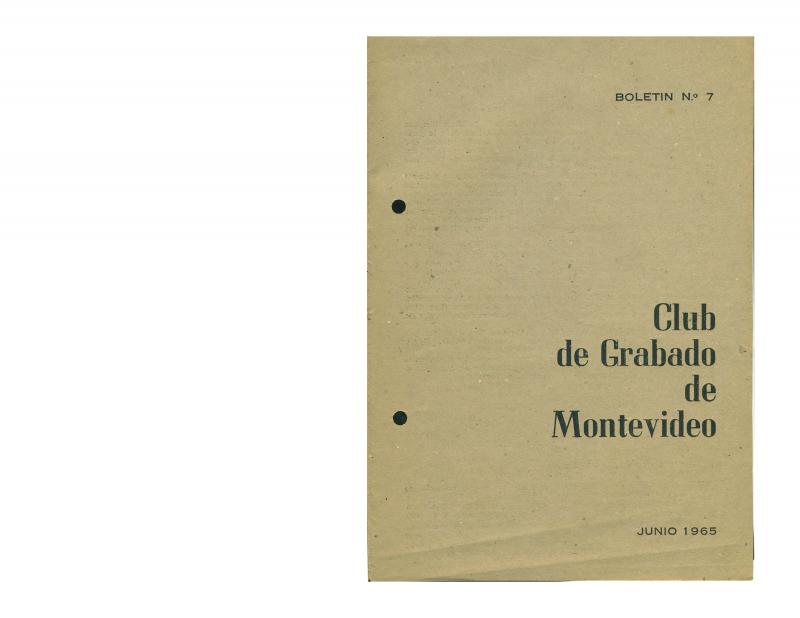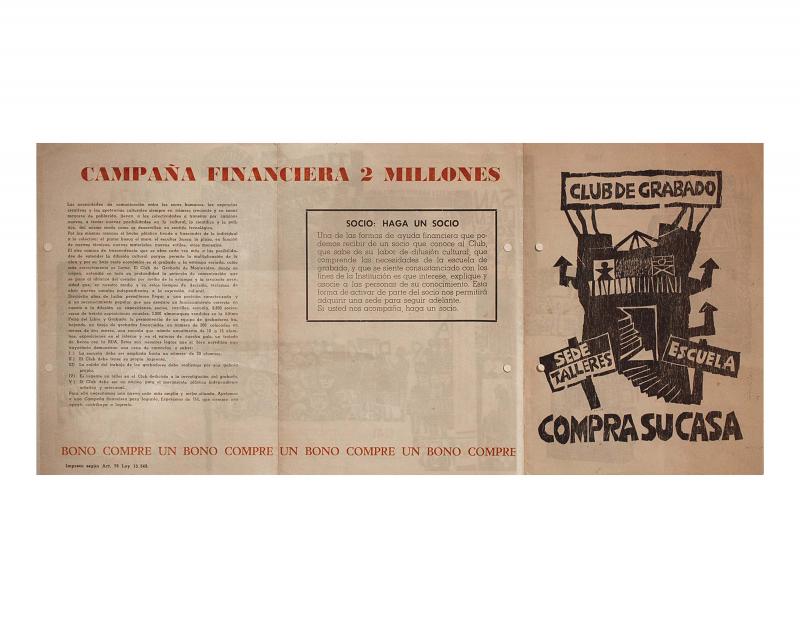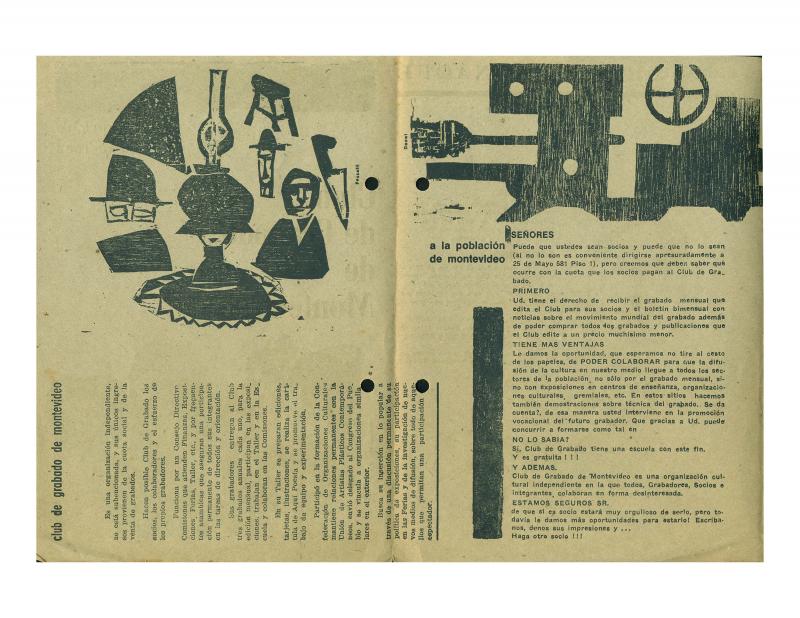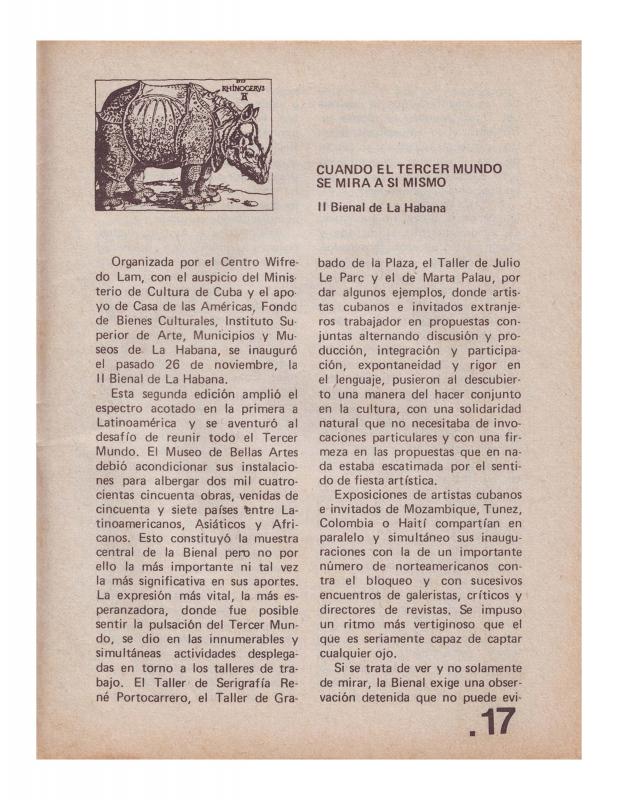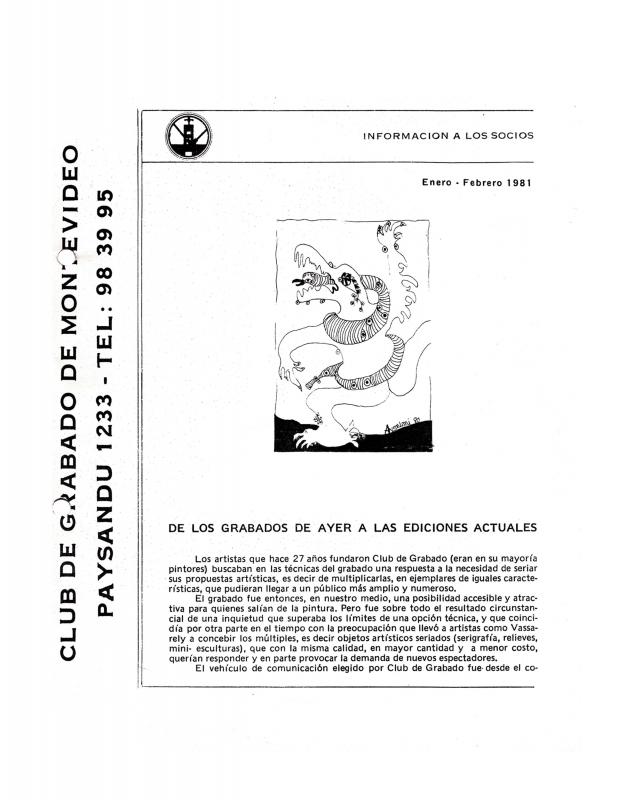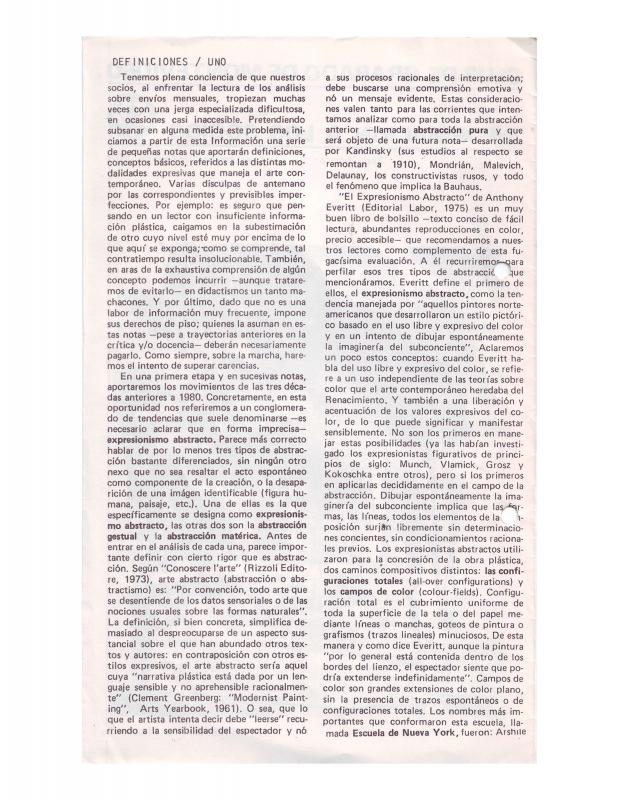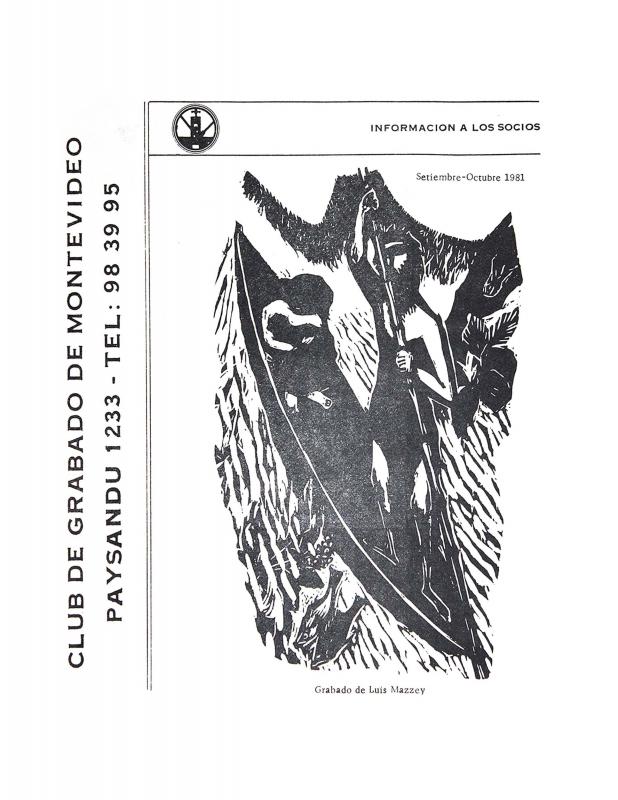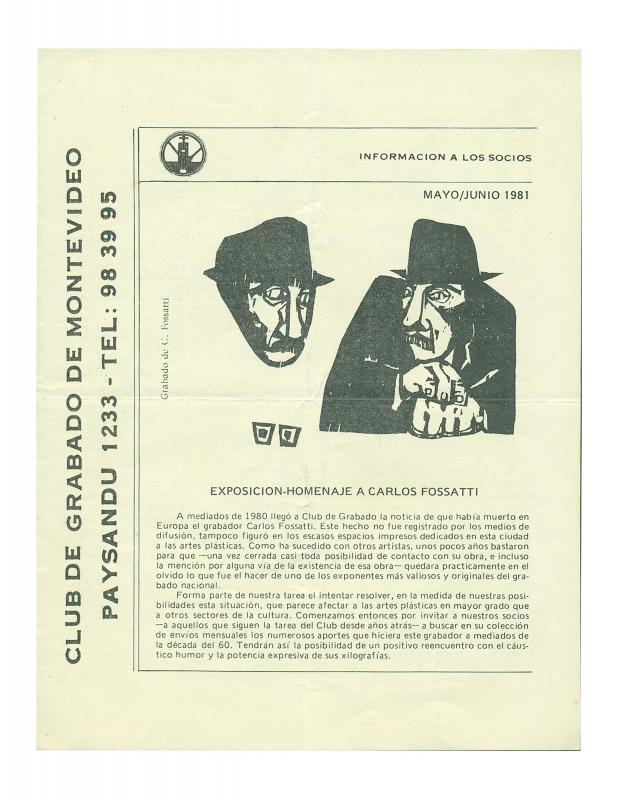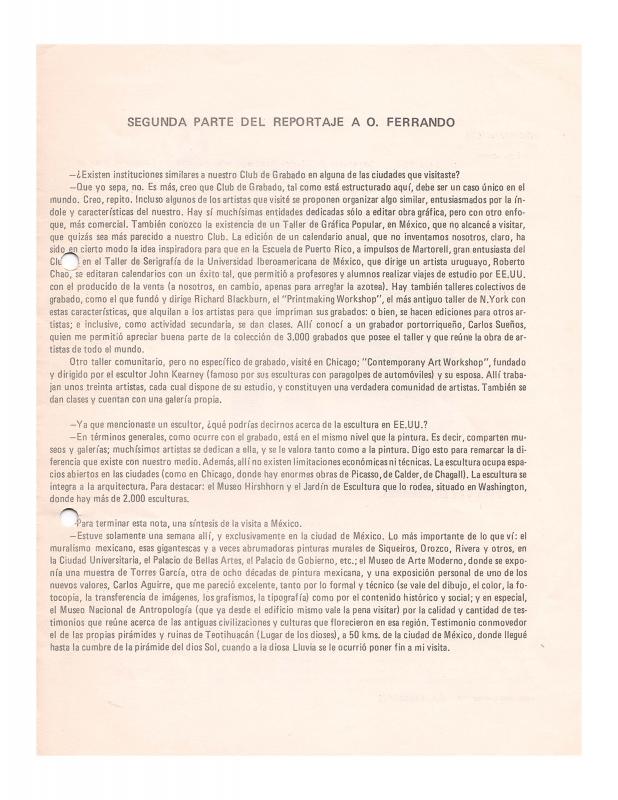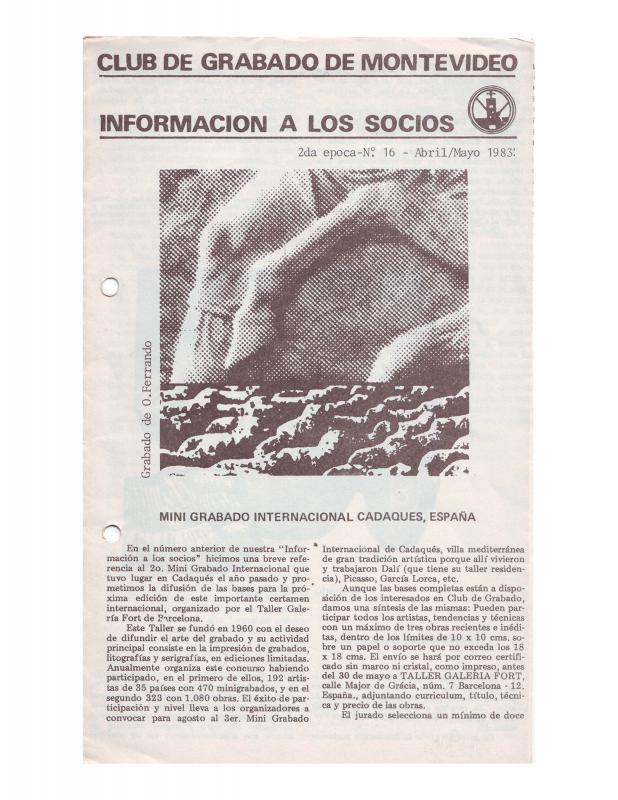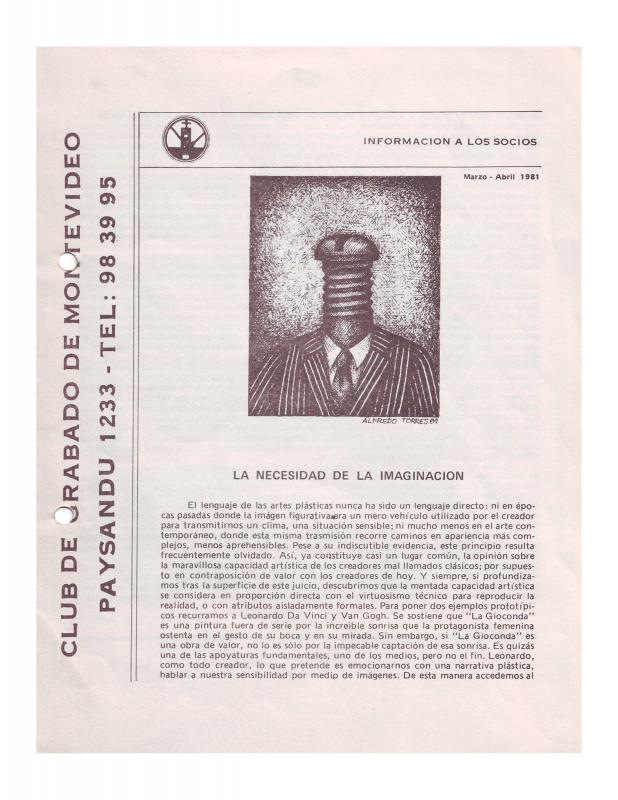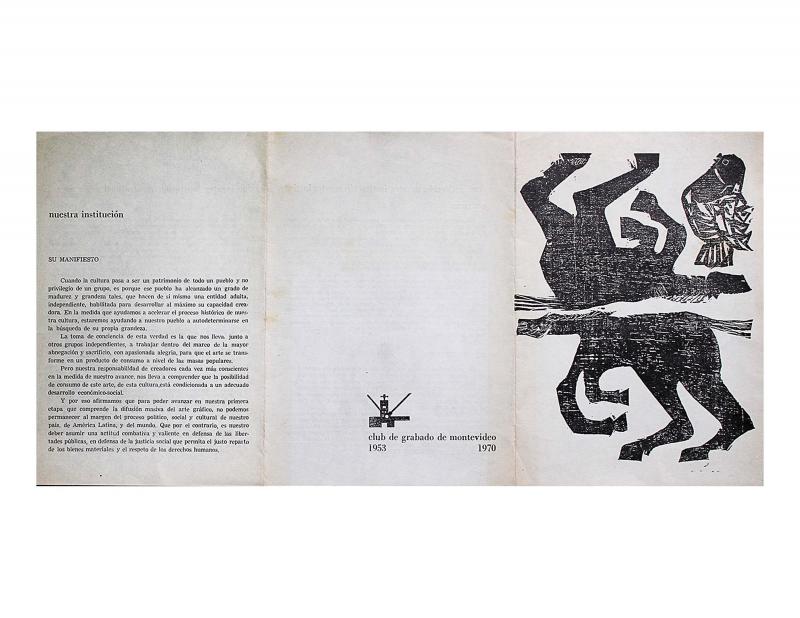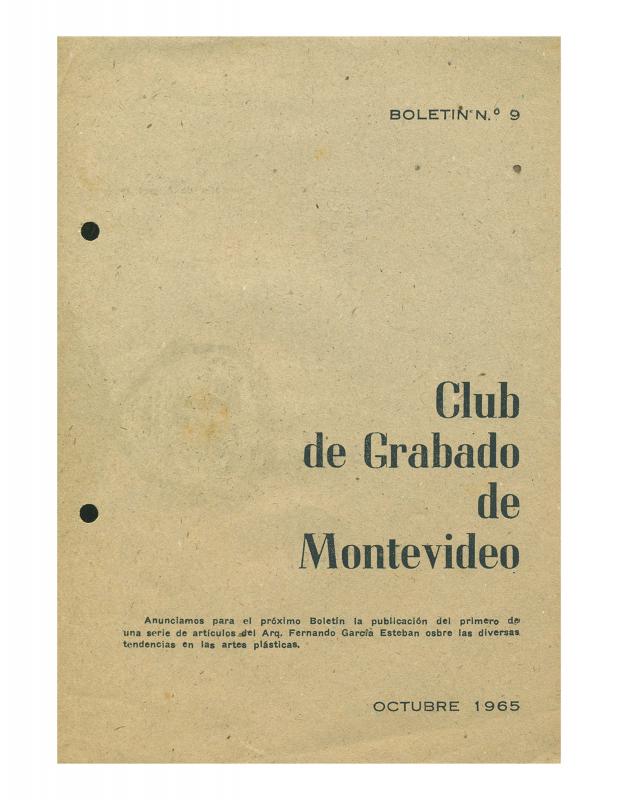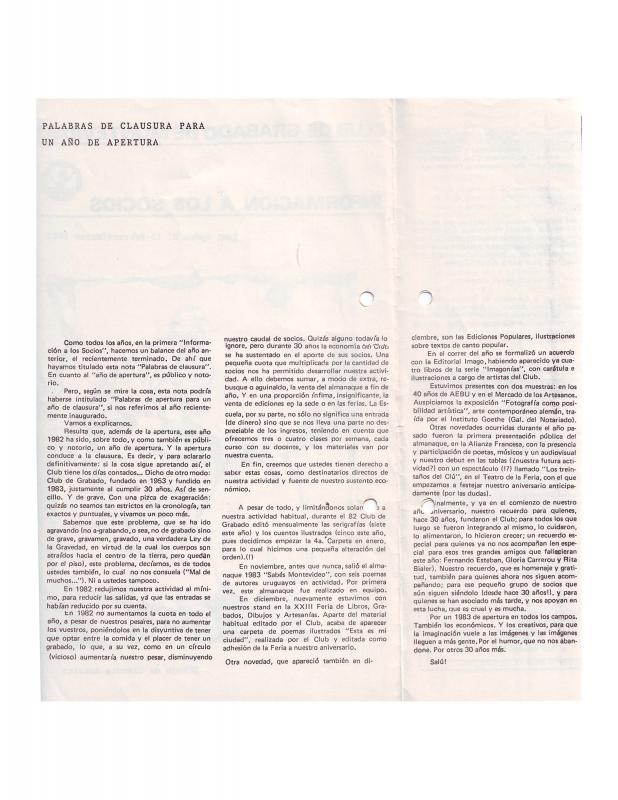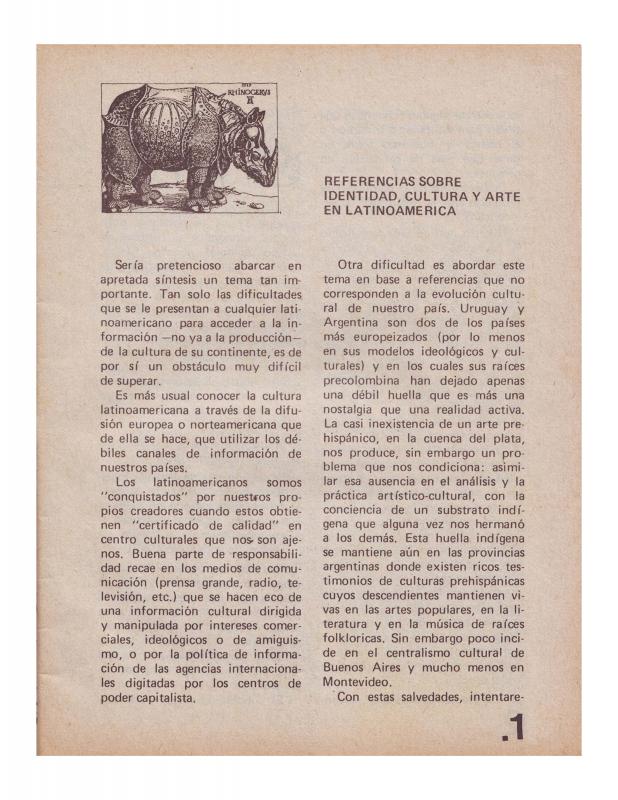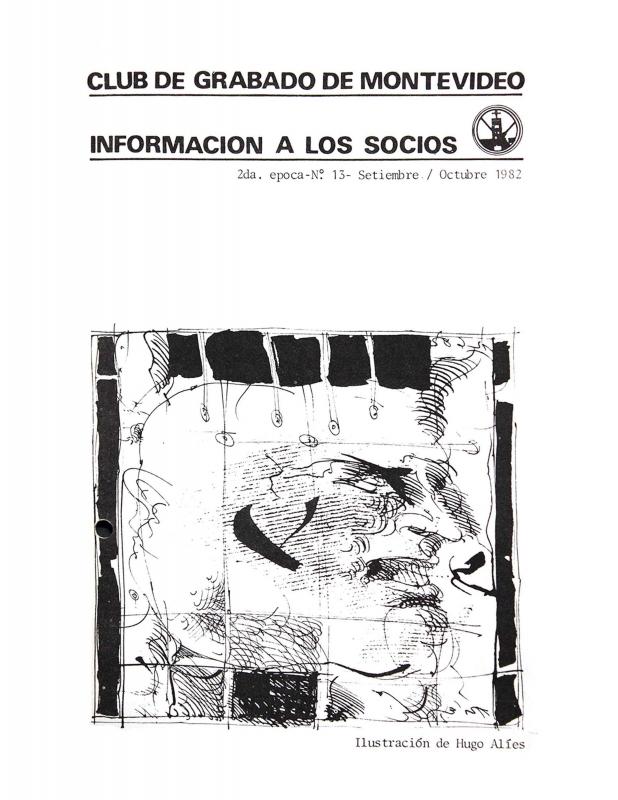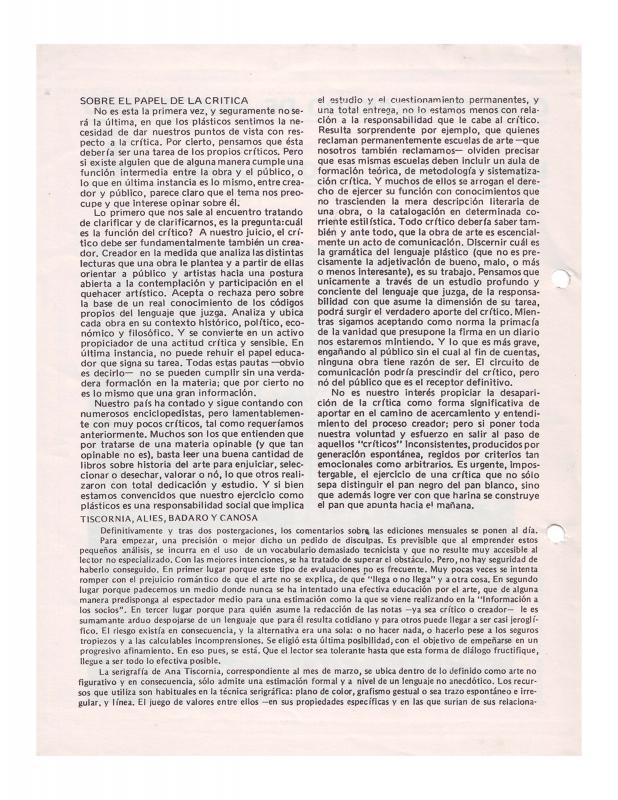The CGM (Club de Grabado de Montevideo, founded in 1953) celebrated its twenty-second birthday at a very difficult time in Uruguay’s political history. After the military coup d’état in 1973, the authorities gradually closed nearly all the important cultural institutions that had flourished during the 1960s. By 1975 the CGM’s activities were being controlled by the government’s repressive tactics and censorship. The (unsigned) text that was published in the celebratory issue of Boletín describes the institution’s founding objectives and the various strategies it had chosen to accomplish them. The text emphasizes, above all, the need for communication between artists and their audience; teamwork is considered essential if that goal is to be achieved, and the group also explains its plans to educate the public by presenting its members’ prints in non-traditional spaces such as street fairs, Cinemateca Uruguaya, and theaters (among others). The flier also includes a description of the group’s birthday celebration at the Teatro Circular de Montevideo. The play that was presented and the singers who performed at the event expressed fragments of an “independent culture” that still survived and sought to remain relevant despite the effects of the dictatorship (1973–85). Given the conditions in which it was written, readers of this text should be aware of the customary self-censorship that was practiced during that period. The text nonetheless conveys a set of (coded) ideas and shows that the group was bold enough to celebrate the continuity of its cultural and artistic program in spite of the prevailing repression. It is interesting to note that the flier devotes space to the various greetings received from regional printmakers’ associations, individual artists, and cultural institutions in general. This clearly underscores the CGM’s links to similar organizations at a local, regional (Argentina and Brazil), and international level at a time when the entire Latin American Southern Cone was in the grip of military dictatorships.
[As complementary reading see, in the ICAA digital archive, the following texts published by the Club de Grabado de Montevideo: “Concurso de grabado para edición” (doc. no. 863481); “13 años de actividad de Club de Grabado de Montevideo” (doc. no. 1183571); “El arte correo en el Uruguay” (doc. no. 1191850); “Boletín N° 7 Club de Grabado de Montevideo” (doc. no. 1182833); “Club de Grabado compra su casa” (doc. no. 1192649); “Club de Grabado de Montevideo 22 Aniversario 1953 - Agosto 1975” (doc. no. 1183514); “Club de Grabado de Montevideo a la población de Montevideo” (doc. no. 1183124); “Cuando el Tercer Mundo se mira a sí mismo. II Bienal de La Habana” (doc. no. 1184459); “De los grabados de ayer a las ediciones actuales” (doc. no. 1191787); “Definiciones / Uno” (doc. no. 1189065); “Entrevista a Luis Mazzey” (doc. no. 1186991); “Entrevista a Óscar Ferrando” (doc. no. 1186747); “Entrevista a Óscar Ferrando [segunda parte]” (doc. no. 1186802); “Mini Grabado Internacional de Cadaqués. España” (doc. no. 1191135); “La necesidad de la imaginación” (doc. no. 1190793); “Nuestra institución” (doc. no. 1182010); “Los nuevos movimientos de las artes” (doc. no. 1182868); “Opiniones (I)” (doc. no. 1185411); “Palabras de clausura para un año de apertura” (doc. no. 1191167); “Referencias sobre identidad, cultura y arte en Latinoamérica” (doc. no. 1183641); “Reflexiones en torno a la supuesta crisis de las artes plásticas” (doc. no. 1185539); and “Sobre el papel de la crítica” (doc. no. 1187071)].

